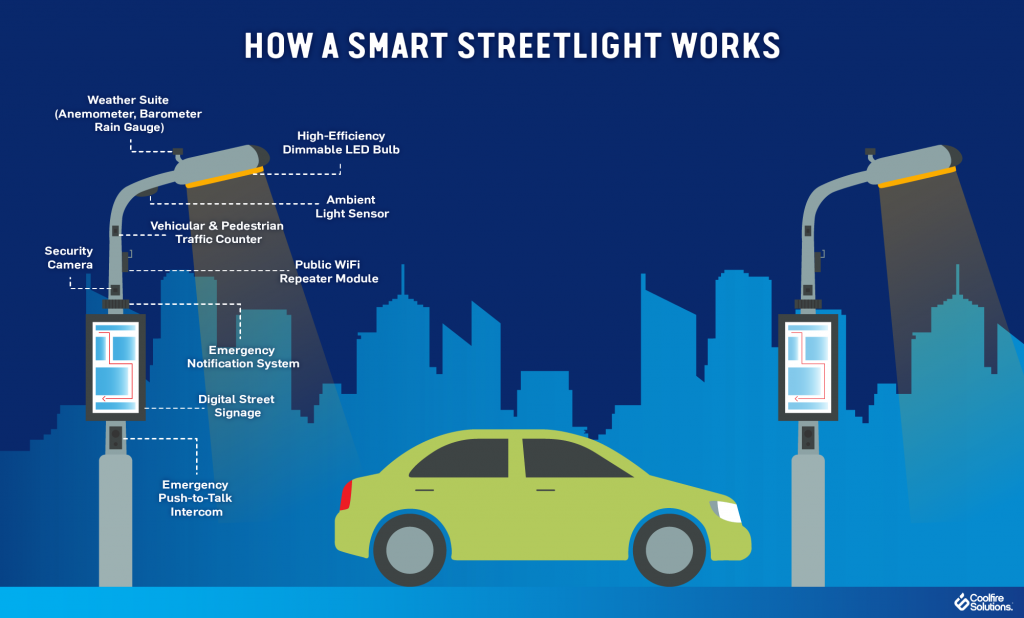
In the early years of solid-state lighting, manufacturers focused on ensuring LED luminaires and sources were first and foremost good illuminators. Manufacturers focused on efficacy, reliability, color and luminance. These early LED solutions were designed to behave and look like the traditional products they were replacing. As LED lighting matures, the focus is shifting toward designs that leverage the extraordinary flexibility of the LED.
LEDs are semiconductor light sources that can be controlled like any other electronic components. The ability to control the LEDs, coupled with their inherently small size, opens the door to endless flexibility in lighting designs and features. For example, the lighting industry has seen an abundance of products with new dimensions of control such as intensity and color tuning.
While important, changing the hue and color temperature of lighting are not the only desired features to control. A critical dimension of light output control is the spatial distribution. Where the lighting is aimed, the beam shape, angles, and distribution are critical parameters.
What architects and designers really want is the ability to put bright white light exactly where they want it to create a perfect design. What owners really want is the flexibility to easily change that distribution as space needs change.
In multifunctional and reconfigurable spaces—such as retail shops, entertainment, hospitality, meeting rooms, museums, galleries and residential spaces—focal points and tasks can change frequently, so flexibility in the light distribution is valuable. A growing number of spaces are joining this category, such as modern classrooms and offices.
Even with the most advanced LED solutions, it was relatively difficult to change the pattern of light. For example, in a retail shop a typical solution is to use track lighting to complement the general lighting. This requires the addition of an accent lighting layer with appropriate luminaires. Each time the space changes, the track lighting must be re-aimed. The typical approach is to do this on a ladder, though some manufacturers offer motorized luminaires. This is labor intensive and expensive.
Using aimable lighting, we can direct the light where we want it, but the beam angle is fixed. Since objects and tasks not only change in terms of location but size and shape, the ability to adjust the light pattern becomes important. The industry responded with adjustable optics. This allows designers and owners to adjust the beam spread within a defined range, again using a ladder to individually access each luminaire
OSRAM SYLVANIA talked to designers, architects, retailers and specifiers about the flexibility they need to easily control lighting. We attempted to address these different needs in a single LED innovation.
This new luminaire is extremely flexible. Light intensity, beam shape and angle can be simply and easily controlled remotely using a wireless Android app. The app allows the user to take a picture of the space using a wireless camera and then touch the image on the screen to aim light. Lighting conditions can be tuned and transformed instantaneously without the use of a ladder.
The recessed luminaire, called OmniPoint, consists of an array of LEDs that are focused through an aperture about the size of a five-inch downlight. Each LED is individually controllable enabling a virtually unlimited number of light patterns. The luminaire can provide ambient and accent lighting at the same time, which can be directed almost anywhere in the space in real time. This flexibility may reduce the overall number of luminaires that are needed in the space resulting in a clean ceiling look.
This LED innovation is the result of natural evolution marrying new technology with longstanding professional lighting needs. At the recent LIGHTFAIR International 2015, it was recognized with an Innovation Award for the Most Innovative Product of the Year and also won the Innovation Award in the Recessed Downlights category. You can see it in action here.
Smart, connected LED lighting solutions that allow us to easily adjust parameters such as intensity, color temperature, hue, beam shape, angle, and distribution are rapidly emerging. These solutions are redefining how we think about, design, specify and use lighting everywhere.



